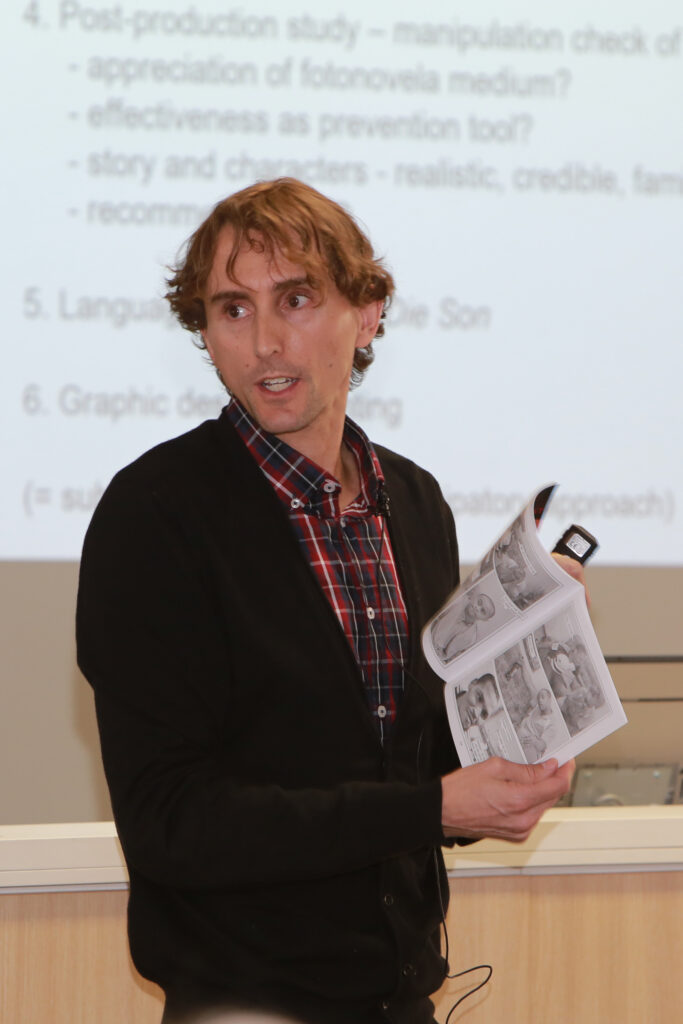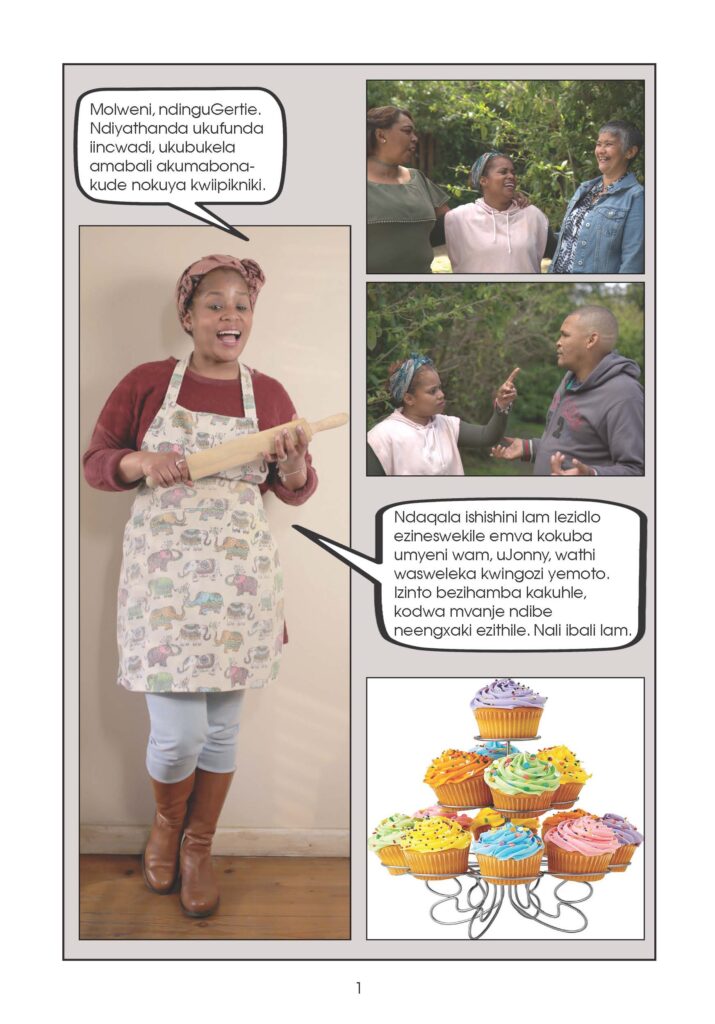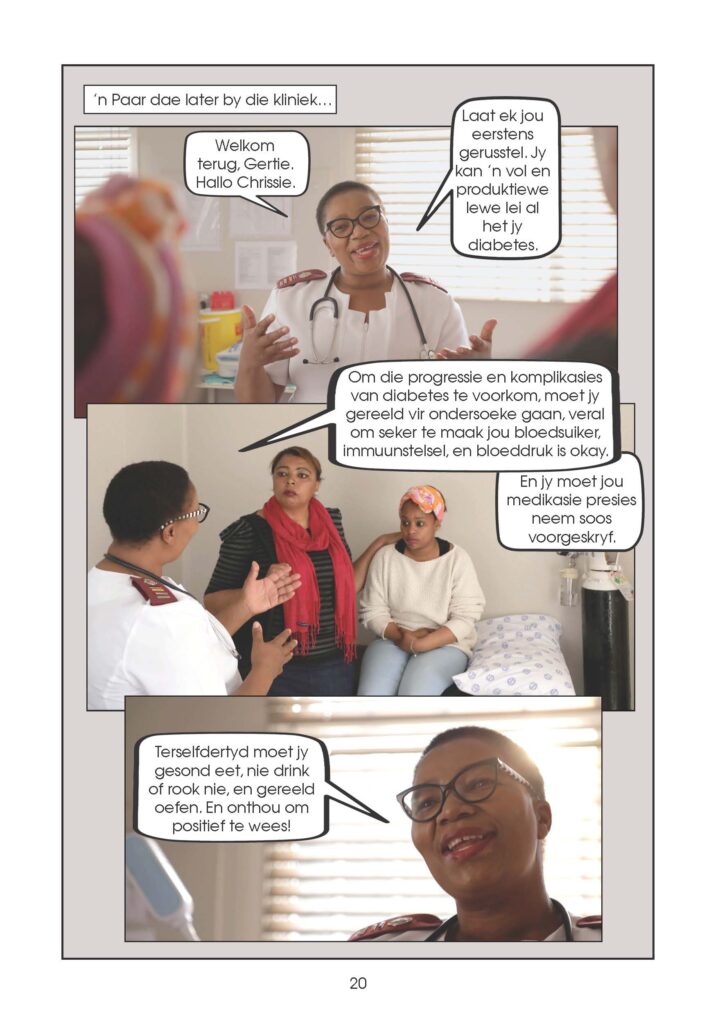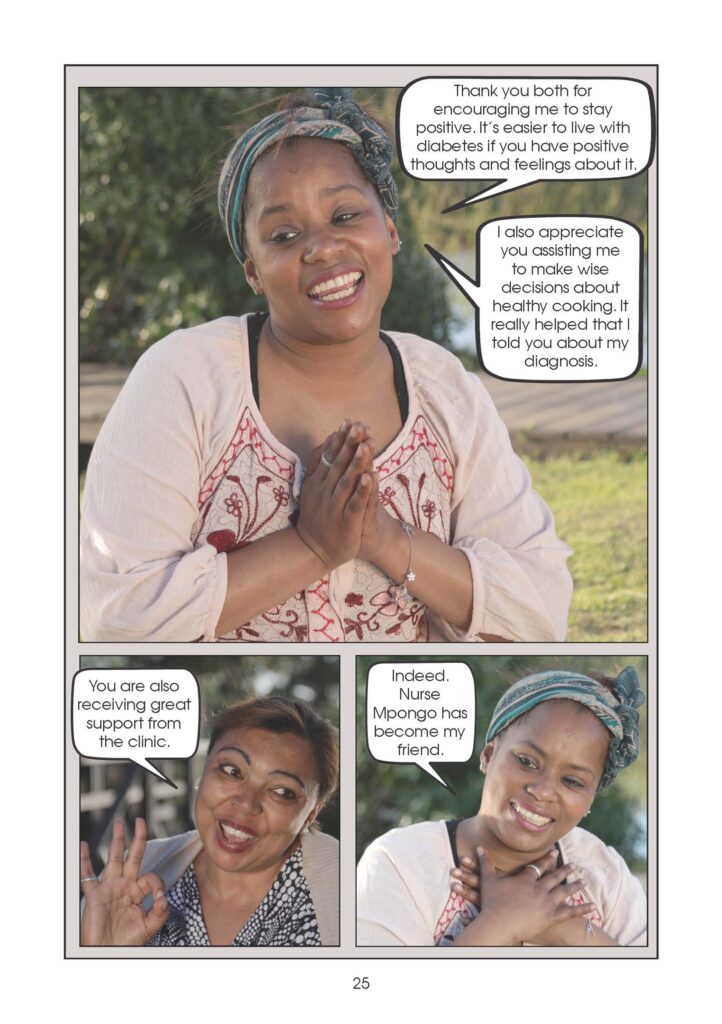
International research shows that photo novels, i.e. booklets that tell a story using photographs and captions, can be effective in health communication – and we have first-hand evidence of this. In 2021, senior lecturer Dr Burt Davis developed a photo book called Gertie’s big secret about diabetes (a co-morbidity for people living with HIV and Aids) in collaboration with the Western Cape Department of Health. This was Burt’s second photo novel. The first, Regret fixes nothing, focused on the tik problem in the Western Cape. His findings on how readers received the photo novel are invaluable to similar future health communication.
Gertie’s big secret was highly successful in helping people gain a better understanding of what a diabetes diagnosis means (e.g. lifestyle changes), making them aware of healthcare support, as well as debunking common myths, such as not being able to live a full and productive life when you have diabetes. By raising general knowledge, it also aimed at helping to prevent new diabetes diagnoses. The story revolves around a woman whose life is turned upside down when she finds out she has diabetes. Gertie’s big secret was primarily made available to healthcare workers and patients in the Cape Winelands, where diabetes is highly prevalent, and generated very positive feedback.
Relatable characters and tailored stories empower people
The success of health communication is believed to be related to the extent to which the story is tailored to the target readers. In this case, the story was available in Afrikaans, English and isiXhosa and featured characters that readers can easily relate to. The research specifically suggests that the age difference between the reader and protagonist plays an important role in how a message is received. To test this, two versions of Gertie’s story were made available.
Feedback from over 400 South African readers in the Western Cape, Northern Cape and Gauteng revealed that there is indeed a link between the age of the protagonist and the age group of the reader, based on perceived similarity. “Younger readers also identified more strongly with the younger protagonist, while there was hardly any difference in this respect with older readers,” said Burt. In addition, younger readers performed best in the knowledge questions after reading the version with the young protagonist, whereas there was no significant knowledge effect on older readers. The conclusion was that “the choice of protagonist in a photo novel is best tailored to the younger part of the target audience”.
Burt has submitted an abstract to present his findings at the 16th language skills conference hosted by the Vereniging Interuniversitair Overleg Taalbeheersinging (VOIT) at the University of Twente in the Netherlands in January 2024. The conference theme is “Language and text in turbulent times”, shining the spotlight on the important role that language, communication and interaction play in the dynamics of sociocultural challenges such as pandemics, the climate crisis and societal polarisation.
Coming soon…a photo novel on teenage pregnancy
Following the success of Gertie’s big secret and the insights gained, we’re excited to announce that another photo novel has already gone into production, covering the very topical issue of teenage pregnancy. In the Western Cape alone, nearly 4 000 children and teenagers between 10 and 19 gave birth within a five-month period this year. The photo novel is done in collaboration with the University of Johannesburg and will initially be tested and distributed among teenage audiences in Soweto. It will address the key risks and consequences of teenage pregnancy. It will also talk to the causes, which often point to deeper social issues such as sexual abuse.



Dr Burt Davis shares the findings of his study on the effectiveness of photo novels as health communication tools.
The diabetes-related photo novel was made available in three languages (Afrikaans, English and isiXhosa) and featured relatable characters and easy-to-follow dialogue.



